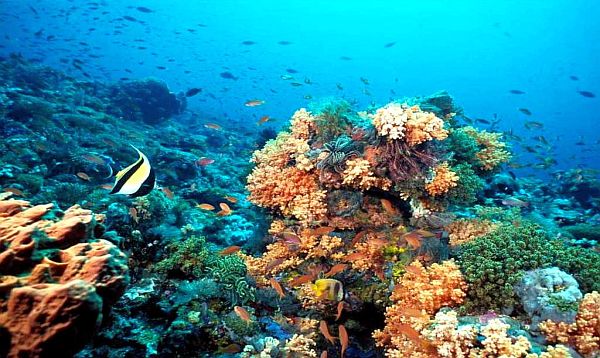Puerto Vallarta, Mexico - Fifteen years ago, the waters around Islas Marietas in Mexico's Nayarit State were so abundant with corals that people could see them for miles.
They were hard to avoid, too. "To go and surf in that area, you would have to wear tennis shoes because it was full of coral mountains," said Javier Alvarez, a tourist operator and owner of outdoors shops from Puerto Vallarta, the nearest mainland city.
But unregulated tourism chipped away at fragile ecosystems to the extent that it was soon corals that needed protecting from humans, said Alvarez.
"Some days there were 3,000 tourists coming every day without any information [on how to behave to protect the area] so they were just throwing water bottles and diapers and anything you could imagine that was sticking to the coral," he said.
 |
Their findings led to actions that limited the number of tourists and regulated tourism, despite serious opposition from operators.
"[Operators] were really angry because in the middle of the study the park closed for three months," said Paola Rodriguez, a coral expert at the University of Guadalajara.
Despite efforts to get local boat operators on board with the project and explain that swarms of people trashing beaches and waters would kill business, while protecting resources was key to growth and longevity, local tensions ran high.
"I had to leave Mexico with my family due to the pressure, with people basically saying: 'We are going to kill you'. When we closed the site, we let the authorities know how mass tourism was starting to kill the coral and degrade the biomass," said Alvarez.
As part of the coral restoration project, the team has planted more 2,900 corals, or "fragments of opportunity". The project quickly proved to be successful, with a 90–95 per cent of all the fragments attaching after three months, and a growth rate of around 5 cm per year for branching corals. This year, the team is providing different protocols for restoration of corals.
Corals from Islas Marietas have shown to be high resistance, "super" corals that can survive challenging conditions such as the bleaching events that affected coral populations worldwide in recent years - the same ones that in Australia's Great Barrier Reef caused the die-off of more than 90 percent of the coral.
 |
"What's good is that we now see sharks, something that did not happen a few years ago," said Rodriguez.
An increase in park fees has seen the number of visitors drop to around 350 per day, reducing the stress on the corals.
At the same time, boat operators are profiting from better standardized fees for trips to certain beauty hotspots, which in some areas have tripled. Tourists have shown they are willing to pay more to visit the areas that have benefited from better regulation, protection and restoration.
Rodriguez sees the model of tourists paying more to enjoy a more controlled and boutique experience of a natural park that their money is helping to preserve as working in Mexico, like it does in other places of outstanding natural beauty and biodiversity such as The Galapagos and Hawaii.
"People are happier, they give better tips, there are less boats and it is less work to find nice spots," she said.
Tourist operators are also invited to participate in the program #adoptacoral, a new initiative in collaboration with PROZONA AC, where tourists can plant their own coral.
Boat operators now carry out underwater cleaning campaigns, ask tourists not to apply sunscreen just before going in the water to protect the corals and insist on people wearing life jackets to stop corals being taken as trinkets.
The challenges include not having enough people to help with the restoration and despite the team's efforts to train operators in how to plant coral, some show little interest or care in doing so.
"The older guys in town will support this project because before, you could see coral for miles and the beaches were great. The fishing industry has really been affected and so profits have plummeted," said Alvarez. "They never teach you the importance of coral in the ecosystem, so when you see for yourself that the fish that have disappeared come back, you have to spread the message," he added.
Alvarez has not been able to return to Puerto Vallarta due to accusations of him wanting to invest in the coral restoration project to keep the islands for himself. But he believes that community action, coupled with more national and international awareness, can help business and conservation work together and keep mutually beneficial projects alive, and resources sustainable.
"You cannot protect what you haven't seen and I want to make as much noise as possible to make people aware that those little rocks are actually corals that make oxygen and give us food," he said.
Guadalajara University and PROZONA AC have registered their coral reef project as a voluntary commitment to plant 4,000 coral fragments and increase overall coral cover by 1 per cent by 2020. The project is part of a Community of Ocean Action (CoA), formed following the United Nations Oceans Conference in 2017.
Source: United Nations Environment Programme


